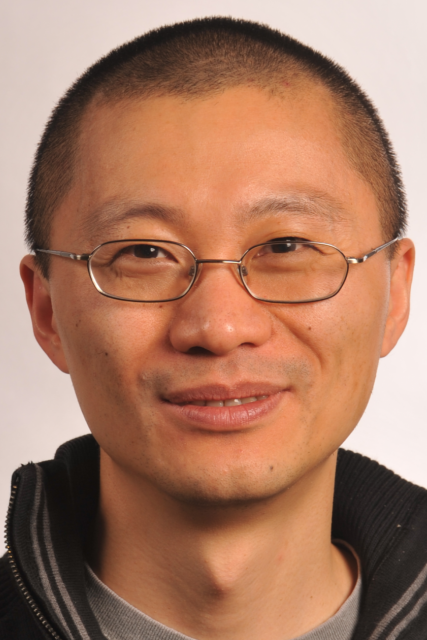
Ruhr-University Bochum
Faculty of Computer Science
Computational Neuroscience
Universitätsstr. 150
44801 Bochum
Room: NB 3.33
Tel: +49 (0)234 32-29486
E-Mail: sen.cheng@rub.de
Office hours: By Arrangement
Table of Contents
Courses
Research
My research group investigates the neural mechanisms underlying learning and memory. We are primarily interested in the hippocampus, the brain region that is mainly involved in episodic memory, as well as in the learning and memory of sequences. Our research focuses on the dynamics of these processes, which has received relatively little attention to date.
We employ two complementary approaches. Our first approach is modeling, including mathematic models as well as computer simulation of complex networks. While all models are simplified, we aim to build biologically realistic models that capture the essence of the neural circuit mechanism underlying learning and memory. Our second approach is data-mining. We develop methods for model-based data analysis and apply such methods to experimental data. These data include electrophysiological and EEG recordings as well as behavioral data. We collaborate closely with neuroscientists on the RUB campus and at other universities in Germany.
Publications
2024
2023
2022
2021
2020
2019
2018
2017
2016
2015
2014
2013
2012
2011
2008
2007
2006
2004
2003
2002
2001
Publications
Alexander May, Massimo Ostuzzi
Multiple Group Action Dlogs with(out) Precomputation Artikel Geplante Veröffentlichung
In: Preprint, Geplante Veröffentlichung.
Links | Schlagwörter: Preprint
@article{DBLP:journals/iacr/MayO24,
title = {Multiple Group Action Dlogs with(out) Precomputation},
author = {Alexander May and Massimo Ostuzzi},
url = {https://eprint.iacr.org/2024/564, Paper },
year = {2024},
date = {2024-01-01},
urldate = {2024-01-01},
journal = {Preprint},
keywords = {Preprint},
pubstate = {forthcoming},
tppubtype = {article}
}
Sebastian Bitzer, Jeroen Delvaux, Elena Kirshanova, Sebastian Maaßen, Alexander May, Antonia Wachter-Zeh
How to Lose Some Weight - A Practical Template Syndrome Decoding Attack Workshop
Coding and Cryptography (WCC 24), 2024.
Links | Schlagwörter: Crypto Others
@workshop{DBLP:journals/iacr/BitzerDKMMW24,
title = {How to Lose Some Weight - A Practical Template Syndrome Decoding Attack},
author = {Sebastian Bitzer and Jeroen Delvaux and Elena Kirshanova and Sebastian Maaßen and Alexander May and Antonia Wachter-Zeh},
url = {https://eprint.iacr.org/2024/621, Paper
https://wcc2024.sites.dmi.unipg.it/SLIDES/Bitzer.pdf, Slides},
year = {2024},
date = {2024-01-01},
urldate = {2024-01-01},
booktitle = {Coding and Cryptography (WCC 24)},
journal = {IACR Cryptol. ePrint Arch.},
pages = {621},
keywords = {Crypto Others},
pubstate = {published},
tppubtype = {workshop}
}
Alexander May, Julian Nowakowski
Too Many Hints - When LLL Breaks LWE Proceedings Article
In: Advances in Cryptology (ASIACRYPT 23), 2023.
Links | Schlagwörter: Crypto Flagship, Rank A*/A
@inproceedings{DBLP:conf/asiacrypt/MayN23,
title = {Too Many Hints - When LLL Breaks LWE},
author = {Alexander May and Julian Nowakowski},
url = {https://eprint.iacr.org/2023/777.pdf, Paper
https://iacr.org/submit/files/slides/2023/asiacrypt/asiacrypt2023/314/slides.pdf, Slides
https://www.youtube.com/watch?v=4USR_wlFpg8, Video
https://doi.org/10.1007/978-981-99-8730-6\\\\\\\\\\\\\\\\\\\\\\\\\\\\\\\\\\\\\\\\\\\\\\\\\\\\\\\\\\\\\\\\\\\\\\\\\\\\\\\\\\\\\\\\\\\\\\\\\\\\\\\\\\\\\\\\\\\\\\\\\\\\\\\\_4, DOI
},
year = {2023},
date = {2023-12-01},
urldate = {2023-12-01},
booktitle = {Advances in Cryptology (ASIACRYPT 23)},
volume = {14441},
series = {Lecture Notes in Computer Science},
keywords = {Crypto Flagship, Rank A*/A},
pubstate = {published},
tppubtype = {inproceedings}
}
Timo Glaser, Alexander May
How to Enumerate LWE Keys as Narrow as in Kyber/Dilithium Proceedings Article
In: Cryptology and Network Security (CANS 23), S. 75–100, Springer, 2023.
Links | Schlagwörter: Crypto Others
@inproceedings{DBLP:conf/cans/GlaserM23,
title = {How to Enumerate LWE Keys as Narrow as in Kyber/Dilithium},
author = {Timo Glaser and Alexander May},
url = {https://eprint.iacr.org/2022/1337.pdf, Paper
https://doi.org/10.1007/978-981-99-7563-1_4, DOI
https://dblp.uni-trier.de/rec/conf/cans/GlaserM23.html?view=bibtex, bibtex},
year = {2023},
date = {2023-01-01},
urldate = {2023-01-01},
booktitle = {Cryptology and Network Security (CANS 23)},
volume = {14342},
pages = {75–100},
publisher = {Springer},
series = {Lecture Notes in Computer Science},
keywords = {Crypto Others},
pubstate = {published},
tppubtype = {inproceedings}
}
Elena Kirshanova, Alexander May
Breaking Goppa-based McEliece with hints Proceedings Article
In: Security and Cryptography for Networks (SCN 22), and Journal of Information and Computation, Volume 293, 2023.
Links | Schlagwörter: Crypto Others
@inproceedings{DBLP:journals/iandc/KirshanovaM23,
title = {Breaking Goppa-based McEliece with hints},
author = {Elena Kirshanova and Alexander May},
url = {https://eprint.iacr.org/2022/525.pdf, Paper
https://doi.org/10.1016/j.ic.2023.105045, DOI Journal
https://link-springer-com-443.webvpn.synu.edu.cn/chapter/10.1007/978-3-031-14791-3_1, DOI Conference
https://dblp.uni-trier.de/rec/conf/pqcrypto/KirshanovaMN23.html?view=bibtex, bibtex},
year = {2023},
date = {2023-01-01},
urldate = {2023-01-01},
booktitle = {Security and Cryptography for Networks (SCN 22), and
Journal of Information and Computation, Volume 293},
issuetitle = {Test},
journal = {Information and Computation},
volume = {Volume 293},
keywords = {Crypto Others},
pubstate = {published},
tppubtype = {inproceedings}
}
Jesús-Javier Chi-Dominguez, Andre Esser, Sabrina Kunzweiler, Alexander May
Low Memory Attacks on Small Key CSIDH Proceedings Article
In: Applied Cryptography and Network Security (ACNS 23), S. 276–304, Springer, 2023.
Links | Schlagwörter: Crypto Others
@inproceedings{DBLP:conf/acns/ChiDominguezEKM23,
title = {Low Memory Attacks on Small Key CSIDH},
author = {Jesús-Javier Chi-Dominguez and Andre Esser and Sabrina Kunzweiler and Alexander May},
url = {https://eprint.iacr.org/2023/507.pdf, Paper
https://doi.org/10.1007/978-3-031-33491-7_11, DOI},
year = {2023},
date = {2023-01-01},
urldate = {2023-01-01},
booktitle = {Applied Cryptography and Network Security (ACNS 23)},
issuetitle = {Applied Cryptography and Network Security (ACNS)},
volume = {13906},
pages = {276–304},
publisher = {Springer},
chapter = {Part II},
series = {Lecture Notes in Computer Science},
keywords = {Crypto Others},
pubstate = {published},
tppubtype = {inproceedings}
}
Elena Kirshanova, Alexander May, Julian Nowakowski
New NTRU Records with Improved Lattice Bases Proceedings Article
In: Post-Quantum Cryptography (PQCrypto 23), S. 167–195, Springer, 2023.
Links | Schlagwörter: Crypto Others
@inproceedings{DBLP:conf/pqcrypto/KirshanovaMN23c,
title = {New NTRU Records with Improved Lattice Bases},
author = {Elena Kirshanova and Alexander May and Julian Nowakowski},
url = {https://eprint.iacr.org/2023/582.pdf, Paper
https://doi.org/10.1007/978-3-031-40003-2_7, DOI
https://dblp.uni-trier.de/rec/conf/pqcrypto/KirshanovaMN23.html?view=bibtex%20bibtex, bibtex
},
year = {2023},
date = {2023-01-01},
urldate = {2023-01-01},
booktitle = {Post-Quantum Cryptography (PQCrypto 23)},
volume = {14154},
pages = {167–195},
publisher = {Springer},
series = {Lecture Notes in Computer Science},
keywords = {Crypto Others},
pubstate = {published},
tppubtype = {inproceedings}
}
Alexander May, Carl Richard Theodor Schneider
Dlog is Practically as Hard (or Easy) as DH - Solving Dlogs via DH Oracles on EC Standards Proceedings Article
In: Transactions on Cryptographic Hardware and Embedded Systems (TCHES), S. 146–166, 2023.
Links | Schlagwörter: Crypto Area, Rank A*/A
@inproceedings{DBLP:journals/tches/MayS23,
title = {Dlog is Practically as Hard (or Easy) as DH - Solving Dlogs via DH Oracles on EC Standards},
author = {Alexander May and Carl Richard Theodor Schneider},
url = {https://eprint.iacr.org/2023/539, Paper
https://informatik.rub.de/wp-content/uploads/2024/08/Dlog_vs_DH-2.pdf, Slides
https://doi.org/10.46586/tches.v2023.i4.146-166, DOI
https://dblp.org/rec/journals/iacr/MayS23.html?view=bibtex, bibtex},
year = {2023},
date = {2023-01-01},
urldate = {2023-01-01},
booktitle = {Transactions on Cryptographic Hardware and Embedded Systems (TCHES)},
volume = {2023},
number = {4},
pages = {146–166},
keywords = {Crypto Area, Rank A*/A},
pubstate = {published},
tppubtype = {inproceedings}
}
Andre Esser, Alexander May, Javier A. Verbel, Weiqiang Wen
Partial Key Exposure Attacks on BIKE, Rainbow and NTRU Proceedings Article
In: Advances in Cryptology (CRYPTO 2022) , S. 346–375, Springer, 2022.
Links | Schlagwörter: Crypto Flagship, Rank A*/A
@inproceedings{DBLP:conf/crypto/EsserMVW22b,
title = {Partial Key Exposure Attacks on BIKE, Rainbow and NTRU},
author = {Andre Esser and Alexander May and Javier A. Verbel and Weiqiang Wen},
url = {https://eprint.iacr.org/2022/259.pdf, Paper
https://iacr.org/submit/files/slides/2022/crypto/crypto2022/70/slides.pptx, Slides
https://doi.org/10.1007/978-3-031-15982-4_12, DOI
https://dblp.uni-trier.de/rec/conf/crypto/EsserMVW22.html?view=bibtex, bibtex},
year = {2022},
date = {2022-08-01},
urldate = {2022-08-01},
booktitle = {Advances in Cryptology (CRYPTO 2022) },
volume = {13509},
pages = {346–375},
publisher = {Springer},
series = {Lecture Notes in Computer Science},
keywords = {Crypto Flagship, Rank A*/A},
pubstate = {published},
tppubtype = {inproceedings}
}
Alexander May, Julian Nowakowski, Santanu Sarkar
Approximate Divisor Multiples - Factoring with Only a Third of the Secret CRT-Exponents Proceedings Article
In: Advances in Cryptology (EUROCRYPT 22) , S. 147–167, Springer, 2022.
Links | Schlagwörter: Crypto Flagship, Rank A*/A
@inproceedings{DBLP:conf/eurocrypt/MayNS22,
title = {Approximate Divisor Multiples - Factoring with Only a Third of the Secret CRT-Exponents},
author = {Alexander May and Julian Nowakowski and Santanu Sarkar},
url = {https://eprint.iacr.org/2022/271.pdf, Paper
https://iacr.org/submit/files/slides/2022/eurocrypt/eurocrypt2022/94/slides.pdf, Slides
https://youtube.com/watch?v=4USR_wlFpg8, Video
https://doi.org/10.1007/978-3-031-07082-2_6, DOI},
year = {2022},
date = {2022-05-02},
urldate = {2022-05-02},
booktitle = {Advances in Cryptology (EUROCRYPT 22) },
volume = {13277},
pages = {147–167},
publisher = {Springer},
series = {Lecture Notes in Computer Science},
keywords = {Crypto Flagship, Rank A*/A},
pubstate = {published},
tppubtype = {inproceedings}
}
Lectures (Moodle/Notes)
- Cryptanalysis (Codes, Classic 1, Cl. 2)
- Cryptography (Sym, Asym)
- Probabilistic (Basic, Algos)
- Quantum Algorithms (Script)
Former PhDs
Show names, year of graduation
- Önder Askin, 2024
- Floyd Zweydinger, 2023
- Lars Schlieper, 2022
- Alexander Helm, 2020
- Andre Esser, 2020
- Matthias Minihold, 2019
- Leif Both, 2018
- Robert Kübler, 2018
- Elena Kirshanova, 2016
- Ilya Ozerov, 2016
- Gottfried Herold, 2014
- Alexander Meurer, 2014
- Mathias Herrmann, 2011
- Maike Ritzenhofen, 2010
Calvin & Hobbes

Prof. Dr. Sen Cheng
Computational Neuroscience
Professor / Head of Chair
Address:
Ruhr-University Bochum
Faculty of Computer Science
Computational Neuroscience
Universitätsstr. 150
--D-44801 Bochum
Room: NB 3/33
Telephone: +49 (0)234 32-29486
Office Hours: By arrangement
E-Mail: sen.cheng@rub.de

Courses
- 310506 : Introduction to Computational Neuroscience
- 212006 : Künstliche Neuronale Netze
- 211046 : Introduction to Computational Neuroscience
- 212103 : Journal Club: Learning and Memory
- 212102 : Research Colloquium: Interdisciplinary Perspectives on Episodic Memory
Research
My research group investigates the neural mechanisms underlying learning and memory. We are primarily interested in the hippocampus, the brain region that is mainly involved in episodic memory, as well as in the learning and memory of sequences. Our research focuses on the dynamics of these processes, which has received relatively little attention to date.We employ two complementary approaches. Our first approach is modeling, including mathematic models as well as computer simulation of complex networks. While all models are simplified, we aim to build biologically realistic models that capture the essence of the neural circuit mechanism underlying learning and memory. Our second approach is data-mining. We develop methods for model-based data analysis and apply such methods to experimental data. These data include electrophysiological and EEG recordings as well as behavioral data. We collaborate closely with neuroscientists on the RUB campus and at other universities in Germany.
